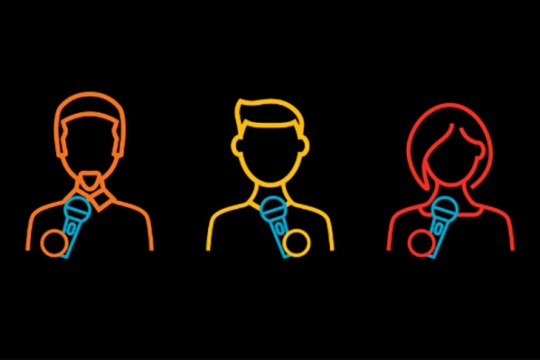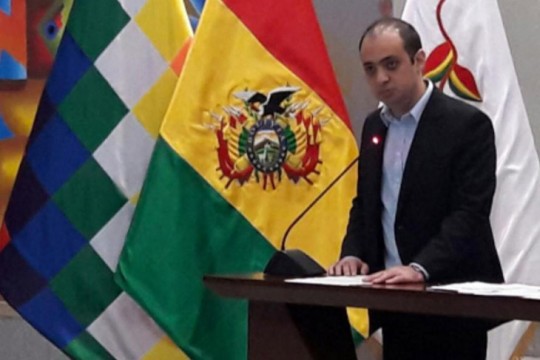News
-
June 23, 2020
![Four scientists analyzing quantum photonics wafer.]()
RIT launching virtual speaker series featuring global leaders in quantum and photonics
RIT is launching an online speaker series that will feature international pioneers in the advancement of photonics for quantum devices. The Virtual Photonics for Quantum Workshop begins June 23 and will feature new invited talks each weekday at 1 p.m. through Aug. 7.
-
June 23, 2020
![screenshot of program that searches math formulas.]()
RIT researchers create easy-to-use math-aware search interface
Researchers at RIT have developed MathDeck, an online search interface that allows anyone to easily create, edit and lookup sophisticated math formulas on the computer. Created by an interdisciplinary team of more than a dozen faculty and students, MathDeck aims to make math notation interactive and easily shareable, and it's is free and open to the public.
-
June 23, 2020
![three researchers working on a drone.]()
RIT’s Digital Imaging and Remote Sensing Laboratory now offering services to the public
Through the Digital Imaging and Remote Sensing (DIRS) Enterprise Center, customers can now hire faculty and staff from RIT’s Chester F. Carlson Center for Imaging Science to provide training, consulting, data collection, equipment calibration and more in relation to drones, imaging and remote sensing technology.
-
June 18, 2020
![x-ray flare from a very young star.]()
X-rays From a Newborn Star Hint at Our Sun's Earliest Days
NASA mentions Joel Kastner, professor in the Chester F. Carlson Center for Imaging Science and School of Physics and Astronomy, and alumnus David Principe '10 Ph.D. (astrophysical science and technology) for being part of a team that observed an X-ray flare from a very young star using NASA's Chandra X-ray Observatory.
-
June 18, 2020
![Hubble image of gas and dust ejected from a star.]()
Hubble Provides Holistic View of Stars Gone Haywire
NASA features Joel Kastner, a professor in RIT’s Chester F. Carlson Center for Imaging Science and School of Physics and Astronomy, and astrophysical science and technology Ph.D. students Jesse Bublitz and Paula Moraga on their latest Hubble telescope observations.
-
June 18, 2020
![graphic with outlines of three people holding microphones.]()
Tigers Helping Tigers fundraising event features performing artists
RIT is hosting a virtual event to raise money for the COVID-19 Emergency Fund, Division of Diversity and Inclusion General Support Fund, and other funds that directly impact students. "Tigers Helping Tigers: An Event to Move Students Forward" will include pre-recorded performances from RIT students and student groups and will be streamed online.
-
June 12, 2020
![Accelerated Fall Calendar: Proposed schedule and updates.]()
Accelerated Fall Calendar: The Path Forward
President David Munson and Provost Ellen Granberg are announcing an accelerated fall academic calendar, with the semester beginning Aug. 19, all in-person classes concluding by Nov. 24 and final examinations to be administered online.
-
June 5, 2020
![professor helping student put on virtual reality headset.]()
RIT faculty earns NIH grant to use virtual reality to help stroke patients regain lost vision
Scientists from RIT and the University of Rochester aim to use virtual reality to help restore vision for people with stroke-induced blindness. The team of researchers led by RIT's Gabriel Diaz, are developing a method they believe could revolutionize rehabilitation for patients with cortically induced blindness, which afflicts about 1% of the population over age 50.
-
June 4, 2020
![graphic reads: Calls for Justice. The RIT community is invited to come together to reflect on the struggles that we are all facing during these painful times. 7 p.m. Friday, June 5]()
RIT will host ‘Calls for Justice’ vigil on Zoom this Friday
RIT is hosting an online interfaith vigil titled “Calls for Justice at RIT” at 7 p.m. June 5 in response to the killing of George Floyd and the subsequent demonstrations against the systemic racism and police brutality that continue to affect black and brown people across the U.S.
-
June 4, 2020
![man speaking at podium next to the Bolivian flag.]()
RIT Rallies: Biotechnology alumnus helping Bolivia respond to COVID-19 pandemic
Mohammed Mostajo-Radji ’11 (biotechnology) was appointed as Bolivia’s first ambassador for science, technology and innovation in February. He is typically based out of Silicon Valley, helping to encourage technology investment in Bolivia. But on March 19 he flew back home at the request of Bolivia’s interim president, Jeanine Áñez, to help coordinate his country’s efforts to combat COVID-19’s spread.
-
May 30, 2020
![thermal infrared image of a person]()
Screening for Fevers with Thermal Imaging Technology
As states begin to reopen, how will our communities stay safe? Find out how thermal imaging technology is being used as one low-impact screening tool.
-
May 28, 2020
![Nathaniel Barlow and Steve Weinstein.]()
RIT scientists develop method to help epidemiologists map spread of COVID-19
Nathaniel Barlow, associate professor in RIT’s School of Mathematical Sciences, and Steven Weinstein, head of RIT’s Department of Chemical Engineering, outline a solution to the SIR epidemic model, which is commonly used to predict how many people are susceptible to, infected by, and recovered from viral epidemics, in a study published in Physica D: Nonlinear Phenomena.
















